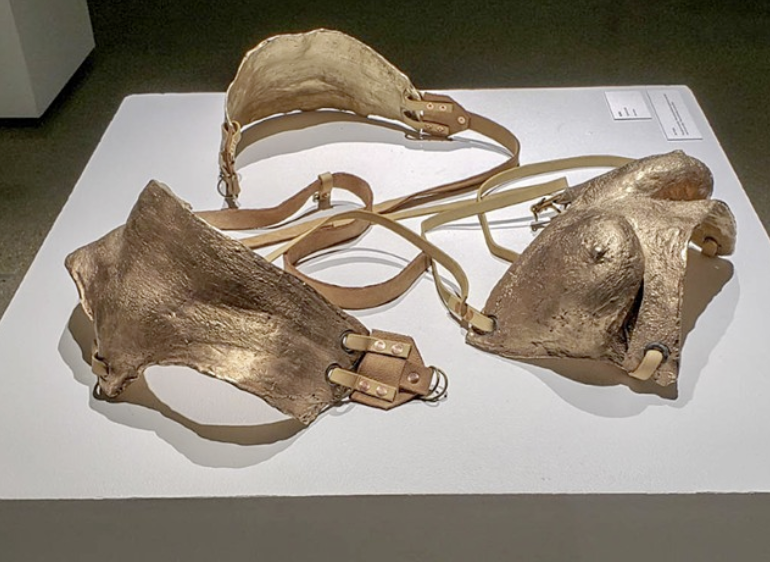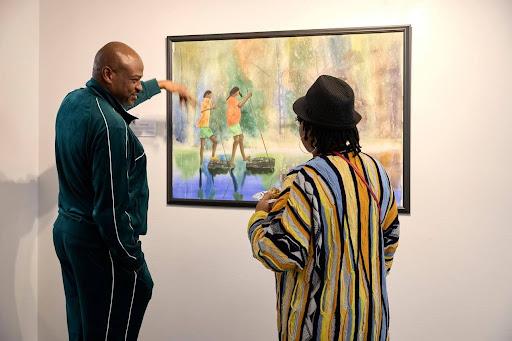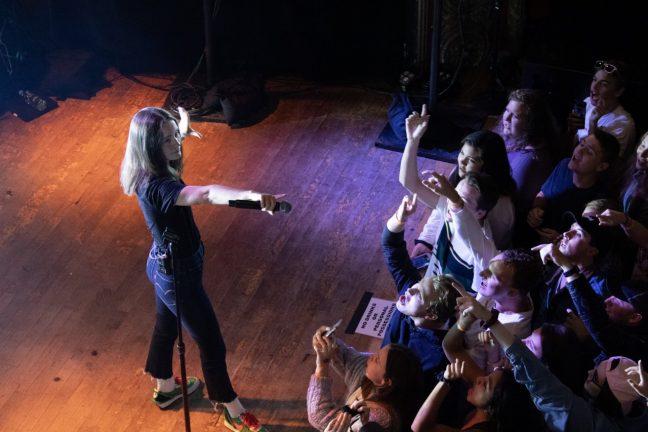The Memorial Union Class of 1925 Gallery’s current show, “Motion Studies,” features an exhibit from local artist Amy Carani, a collection of what she describes as an “exhibition of abstract paintings studying motion within a two-dimensional square picture plane.” She cites influences from pop art, graphic sensibilities and an emphasis on hand-made work. The room is filled with square paintings, a mix of smaller “studies” and larger, more involved works about four times the size of the others. Small spheres boldly outlined in black dominate the canvases, with the occasional addition of squares, stars and other inorganic shapes.
Carani’s aim to explore and play with motion is one shared by many contemporary artists. With the rise of abstraction, artists were allowed the freedom to play with concepts that were more abstract rather than representational. Recently, the works of French artist Julio Le Parc were featured at Palais de Tokyo of Paris in a study of 3-D movement emphasizing the interaction between the art and the viewer. In his exhibit, light, reflection and physical movement worked together to create an interactive study of motion.
Carani’s exhibit, in contrast, is highly static. The paintings are weighed down by thick lines, bold colors and simple, inorganic shapes. This creates a study of motion that is implied through tension, rather than through motion itself. This is most successful in the pieces that show spheres grouped at random, without clutter from other shapes.
The largest work, “Paul’s Scarf,” is the biggest success. The seemingly random placement of the spheres against a backdrop of horizontal and vertical lines call to mind bubbles as they float through a room. It’s as though viewers must hold their breath to keep them from shifting. Other works, especially the smaller studies, seem to get caught up in the perfection of line and shape and lose the sense of motion. Instead, they call to mind some of Keith Haring’s work, full of pop-art influence that carries excitement in the color and line, but not in the sense of motion.
The show is clearly that of an emerging artist. She seems to struggle to define herself. She purports that she studies movement but defines her study so closely that it becomes hard to fit the description in more than a few works without becoming repetitive. If she were to shift her focus to the tension between objects, rather than movement, she would have much more room to experiment and grow as an artist. As a not-yet established artist, she will naturally begin to shift focus beyond movement and grow into a more recognizable style. This growth can already be seen in the way she’s unable to truly pinpoint the overall conceit of her current body of work. If you do catch the show—and it is not difficult to pop in—do so with the intent to follow Carani along her journey of artistic self-exploration.
























